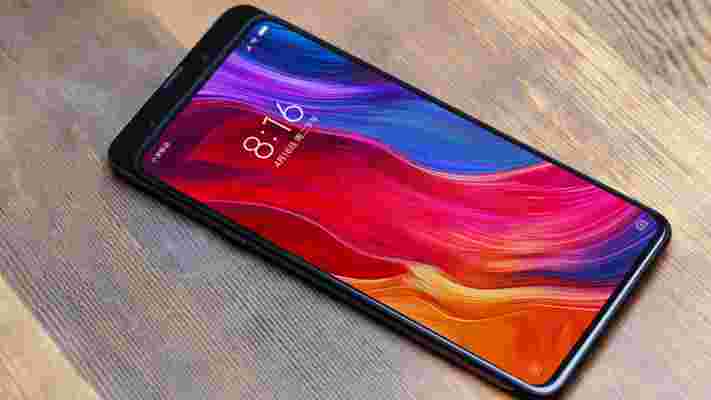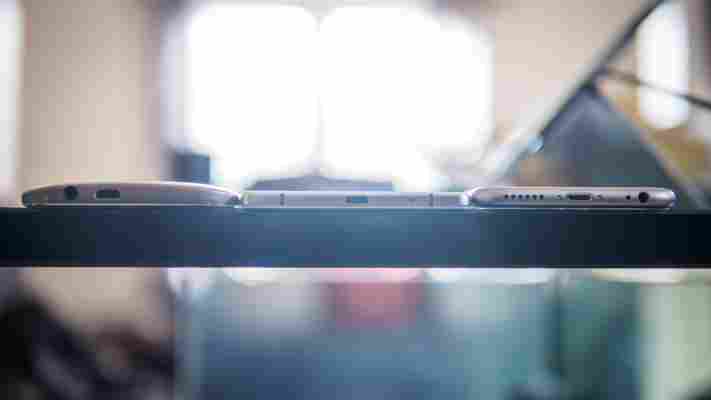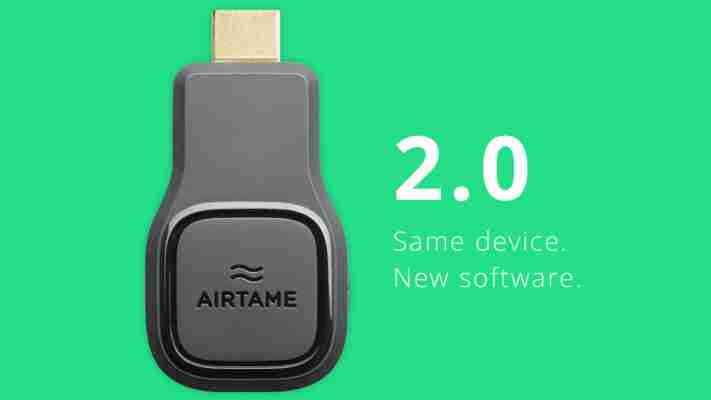Xiaomi’s UK launch was a hilarious embarrassment
Last week, Xiaomi formally entered the UK market . It’s an exciting development for the British phone-buying public. Not only are Xiaomi’s phones really good , but they’re also inexplicably cheap.

There was no way Xiaomi could possibly screw things up. And yet, somehow, they found a way.
First, a bit of background. As a launch promo, Xiaomi offered two models of its phones for the implausibly low price of just £1. This, obviously, is a bargain, and thousands of punters were champing at the bit to get their hands on one.
However, it was unclear how many phones were available for just a quid. On this salient detail, Xiaomi kept shtum.
Although both Gizmodo and Trusted Reviews covered the deal, neither offered any concrete numbers on how much stock was on offer, which suggests that Xiaomi neglected to mention it in the press release. Perhaps that was a deliberate maneuver on Xiaomi’s part because if people knew the truth, there would have been a lot less enthusiasm for the sale.
That’s because according to the promotion’s terms-and-conditions, only three Mi 8 Lite phones were available during the first flash deal. You read that right. Three . Other flash deals only had two units available.
These pocket-money phones were more scarce than gold dust. Or Hamilton tickets. Or Hamilton tickets constructed entirely out of gold dust. That didn’t matter though, as few bothered to read the fine print.
Hundreds — likely thousands — of potential buyers logged on. They registered. They waited with anticipation. And ultimately they were disappointed, as the meager number of handsets sold out in a matter of seconds.
One user even looked into the site’s code, and found that it was set to show the phone as being sold out as soon as the sale began, without actually checking to see stock levels.
The company later clarified that that the phones would be sold on a lottery basis . Those who clicked the button closest to a pre-defined time will be placed into a pool, with “winners” selected randomly.
Xiaomi had previously made no mention of a lottery, with the legal text for the promotion stating that phones would be sold on a first-come, first-serve basis.
It goes without saying that people are utterly furious. Judging from the vitriol bubbling on Twitter, many have a bitter taste in their mouth. Deep down, they’re angry and feel misled.
While I’d stop short at accusing Xiaomi of any deliberate wrongdoing (while the site’s source code is certainly fishy, the terms-and-conditions were pretty clear about the number of cheap phones available), I’d certainly say that they’re guilty of stupidity.
You only get one chance at making a first impression, and Xiaomi really could have handled this one better. Given the company is entering a market for the first time, it would have been prudent to avoid doing anything that would engender ill-will or suspicion.
At least their phones are good, eh?
5 reasons it’s time we stop sacrificing battery life for skinny phones
No other device category is subject to the same pace of relentless innovation as smartphones. Every spec is improved with each new release, meaning better photos, performance and software for users.

That is, every spec except battery life.
While that’s largely because battery technology has been extremely stagnant compared to other hardware, it’s also because we’ve grown to take battery life for granted for the sake of slim design. At the very least, we’ve become complacent.
This is dumb. Here’s why:
This one should go without saying, but our phones are our most oft-used devices. 90 percent of Facebook’s 1.04 billion daily users access the network through their smartphones.
As mobile device and apps become more powerful, the reasons to pull out your laptop become ever less. It’s kind of ironic, then, that we regard battery life on laptops and tablets to be a make-or-break metric, yet it’s treated as more of an anecdote in phone reviews.
Limiting battery life also means that we are limiting what we can do with our phones. Less browsing, less texting, less gaming and less serious work. We shouldn’t have to baby our devices to help them get through a day.
If only we could be a little more body positive about our phones.
Though thankfully the race to be the thinnest phone around is no longer central to the smartphone wars, thinness is still marketed as a highlight feature. Just take the old Oppo R5 , a phone with excellent features and build marred by terrible battery life and a lack of a headphone jack for the sake of thing design.


This doesn’t make sense. One could argue that thinner phones are more pocketable, but that angle is weak considering most flagship phones feature screens larger than five inches, and many people put their devices in cases anyway. Phones growing larger certainly hasn’t been a significant deterrent to their sales; it’d just be nice to see them grow in another dimension.
I’m not a designer, but I do know design should emphasize efficiency, pleasure and saving people time . That most people are forced to either carry a charger and/or battery pack with them or suffer from a dead battery adds to none of of those attributes.
Besides the fact that thinness isn’t really a highlight spec anymore (when’s the last time you paid attention to the iPhone’s thickness?), when you have to carry your charger and requisite cables around with you, then your phone doesn’t seem quite as thin, right? And worrying that your phone is starting to run low before the sun goes down adds needless stress.
Design should be about removing stress – the drive to keep our phones thin only adds to it.
Quick charging is a great feature to have, which is why that’s touted by virtually every flagship Android phone out there. But it’s just a stopgap, not a solution.
A fast charger implies that, well, you’ll have your charger with you. Anytime you need to to run back home or stuff a charger into your bag, we return to the designed inconvenience outlined in the last point. Compound that with the fact that battery life deteriorates significantly over a year or two, and you have a problem.
‘Good’ battery life is generally defined as lasting until the end of day, but we should expect more than that.
Most of the time, ‘end of day’ is just fine. We’re working during the earlier part of the day, and our phones can last through the evening 90 percent of the time. But it’s the remain 10 percent that’s the issue.
Those are the nights when you’re out late and might not have a way to get home. It might be too late for you to pop into a local shop to buy a charger. You might be too drunk to do anything beyond make a phone call. And on a more serious level, it could be when you’re at the worst risk of criminal activity.
In other words, the times I’ve most wished my phone still had a charge are the times my phone is least likely to hold a charge. Simply having a phone I’m sure could last me to the next morning without babying it would add substantial peace of mind.
I’m not saying we should call for a smartphone strike or go picket Apple or Samsung’s HQ. I’m not even saying every phone should have a nice and chunky battery. But I do think we shouldn’t be complacent about the overall trend of lackluster battery life in skinny phones.
Manufacturers will continue to push whatever sells, and in some way or the other, we’ve gotten used to letting mediocre battery life be a common part of smartphone usage. When the Galaxy S6 was released, almost every review noted battery life as a negative, but that didn’t matter in the name of a sleek new design that was probably going to be covered up by a case anyway.
So maybe just think about how much battery life you’re willing to sacrifice in the name of sleek design next time you make a purchase or recommendation. As a reviewer, I definitely will.
Chromecast competitor Airtame completely overhauls its firmware
Airtame , a Chromecast-like HDMI dongle aimed at the enterprise space, has completely overhauled its firmware.

The new ‘ Airtame 2.0 ’ is “a complete overhaul of the Airtame code,” and adds a lot of functionality businesses will enjoy. Without losing any functionality, Airtame added cross-platform support so it’s useful for any operating system.
It also has a native Web browser which can be accessed wirelessly or via an ethernet cable, and software for businesses to run a custom KPI dashboard.
Those dashboards can also run independently of a computer, which make them even more unique. Chromecast requires proximity to a computer to run dashboards, but Airtame’s API and native browser allow it to operate dashboards independently.
“What makes Airtame unique is the device’s dual use, combining both active and passive digital streaming,” says Co-Founder and CEO of Airtame, Jonas Gyalokay. “With this new release, Airtame offers businesses a seamless wireless experience while sharing screens. In this world of abundant data and information, it’s critical to empower your business with the right data. The Airtame 2.0 firmware makes us one of the only streaming devices for businesses that combine the two use cases, and we are looking forward to seeing our product improve our customer’s day-to-day business.”
